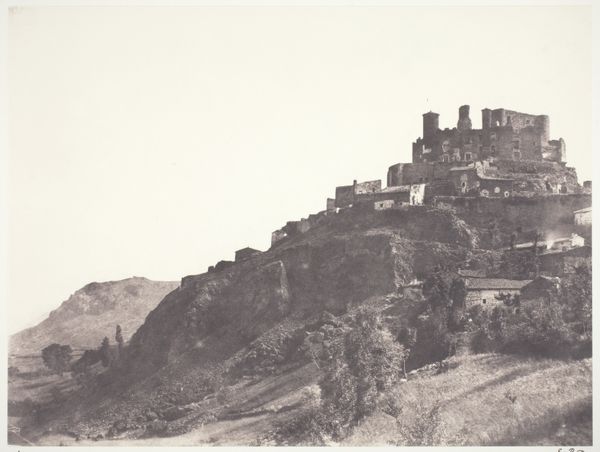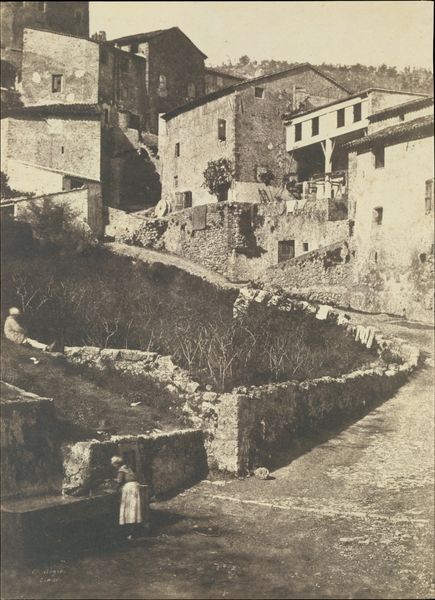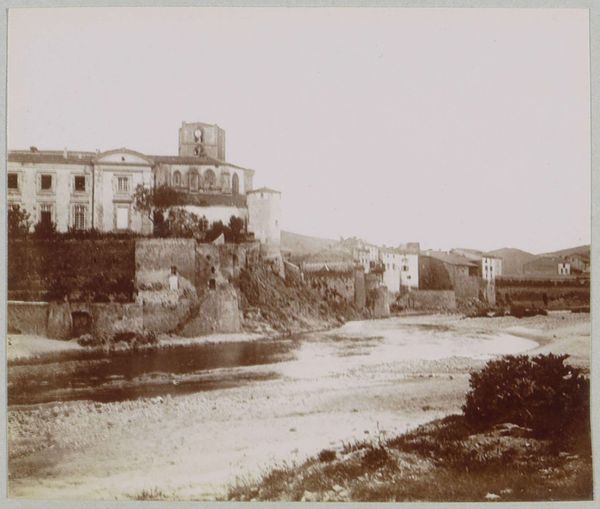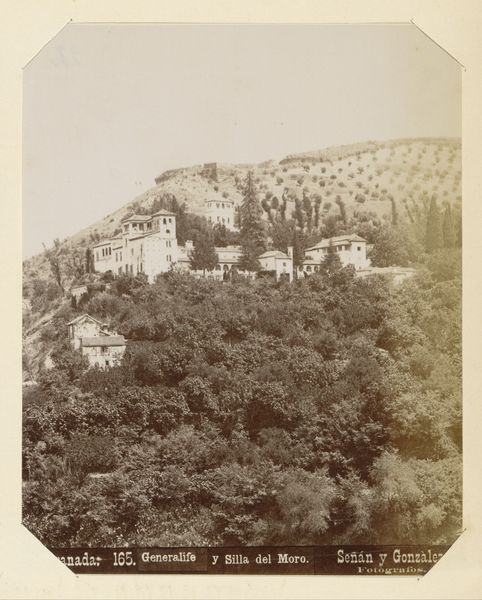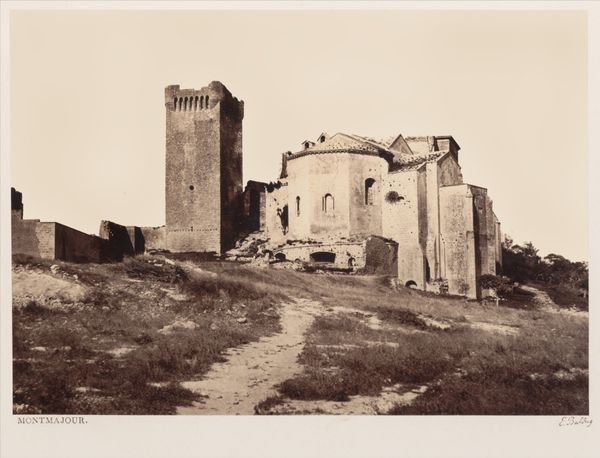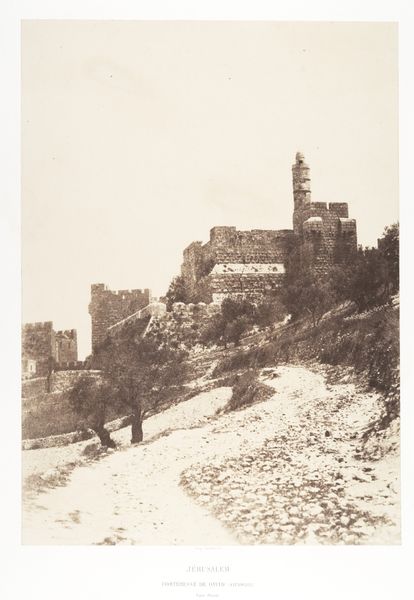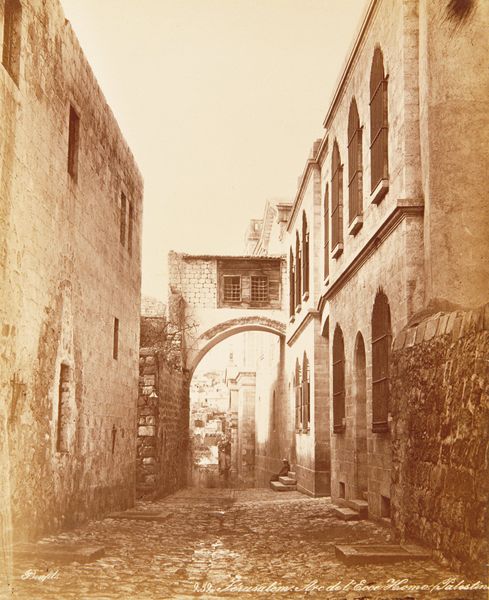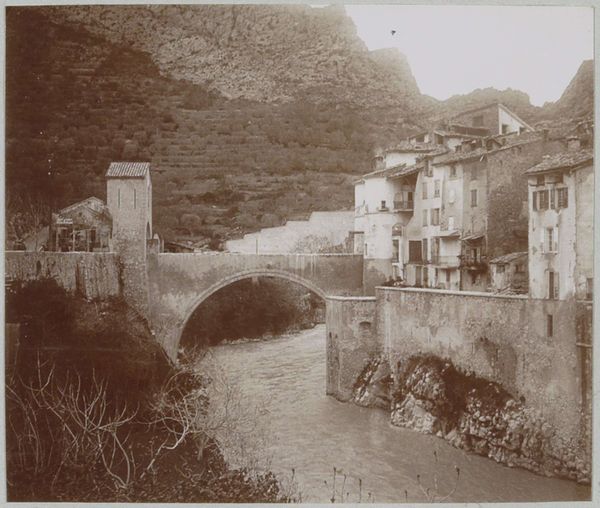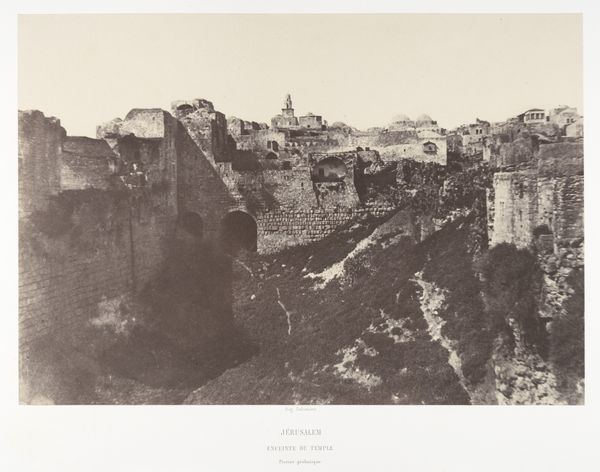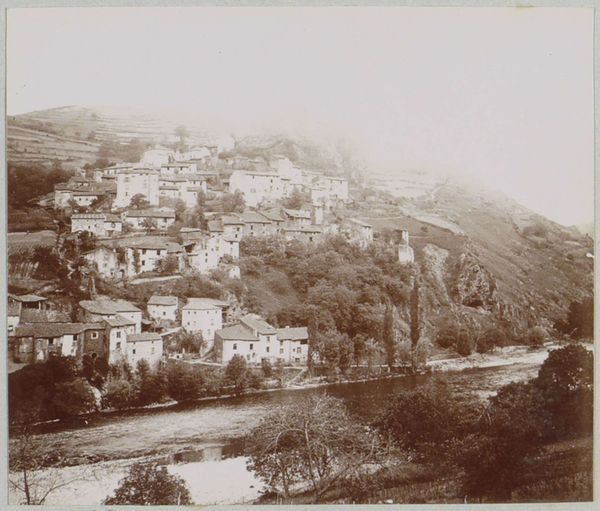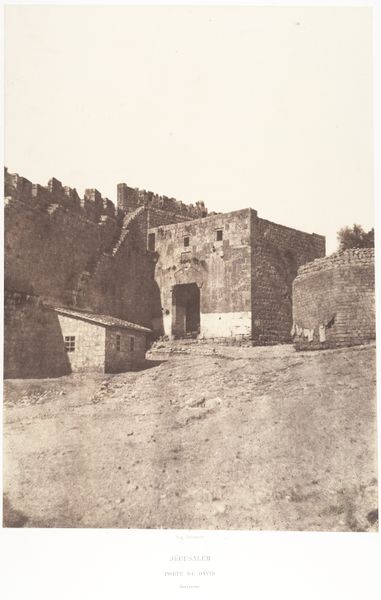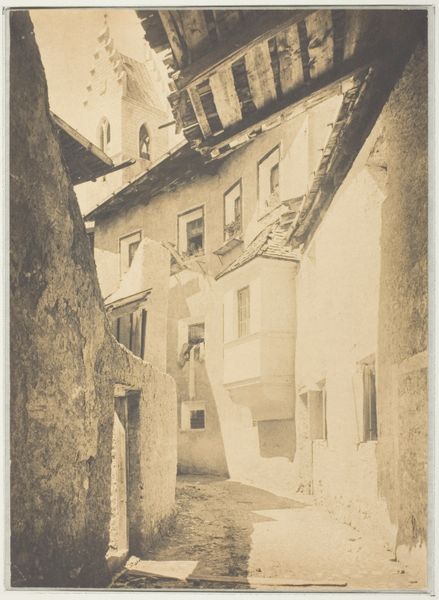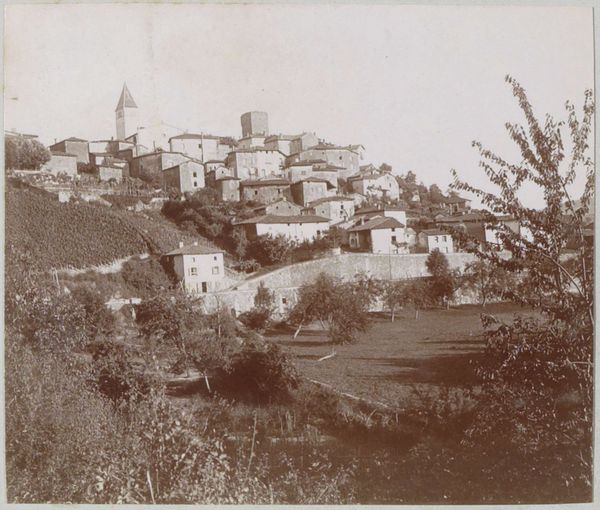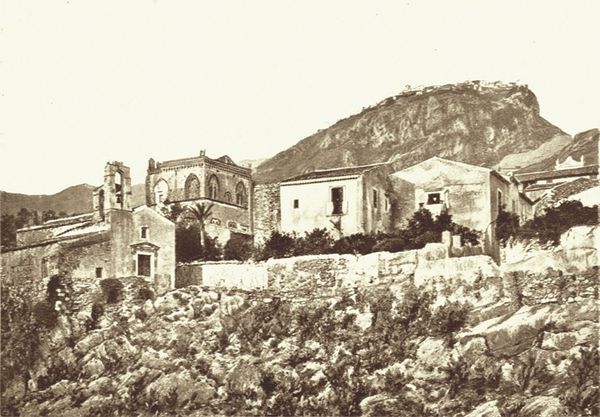
daguerreotype, photography, albumen-print
#
landscape
#
daguerreotype
#
photography
#
historical photography
#
orientalism
#
19th century
#
cityscape
#
albumen-print
Dimensions: height 422 mm, width 308 mm
Copyright: Rijks Museum: Open Domain
Charles Clifford created this photograph of houses on the Alhambra's flanks in Granada using the wet collodion process. In nineteenth-century Europe, there was a burgeoning interest in so-called 'picturesque' views. This aesthetic movement valued the irregular and the untamed, often seeking out scenes that evoked a sense of history and cultural richness. Clifford's image of Granada catered to this taste, showcasing the historic architecture of the Alhambra, a palace that had become a popular tourist destination. His choice to focus on the buildings nestled against the hillside, rather than a straightforward view of the palace itself, suggests a desire to capture the essence of Granada's culture. The photograph's social context is also important. Spain, during the 1800's, was undergoing significant changes, grappling with political instability and economic challenges. The Alhambra, as a symbol of Spain's past glory, served as a reminder of its once vast empire. To fully appreciate Clifford's photograph, we should consider the complex layers of history, cultural exchange, and social conditions that shaped its creation. By consulting historical records, travel journals, and critical analyses, we can gain a deeper understanding of the photograph's significance within its time.
Comments
No comments
Be the first to comment and join the conversation on the ultimate creative platform.
